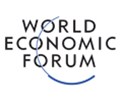
What’s on your list of geopolitical risks? Whether you’re the CEO of a billion-dollar organization or a small business owner, you’ll know how war, climate change, or cyber attacks can impact your business. Everyone is aware of those ‘unknown unknowns,’ as Donald Rumsfeld once said.
While there are many articles and advisories advising organizations on how to deal with these risks, how are they responding? We spoke to decision makers from European organizations that have a significant global presence across a variety of industries to understand their response.
A framework for approaching resilience
We have identified four types of organizational response:
• Risk assessment: tries to understand risks better.
• Risk reduction: trying to lower the risk or its impact on the business model.
• Ringfencing: Some risks cannot be reduced but their impact can be limited.
• Rapid response: Adapt to remaining risks through appropriate responses.
In conversations with company leaders, we found that all of these approaches are used, although more as part of routine decision making than as formal, structured concepts. Now let’s check each one one by one.
Risk assessment
All the businesses we spoke to said they were spending more time understanding the world around them. Many of them employ additional government relations employees, whose primary job is to understand what new laws, wars, or sanctions may be on the horizon. These government relations officials devote little time to explaining to politicians how to avoid unnecessary harm to business. They focus on trying to understand what politicians want to achieve and what might happen in terms of tariffs, sanctions, or new regulations.
Risk assessment is not only about the political environment but also about understanding the supply chain – understanding what suppliers and customers depend on and how geopolitics and adverse impacts of the post-Covid supply chain will be.
Some leaders today are taking extreme scenarios more seriously. They have determined a company-specific worst case, namely an ‘unmanageable’ situation. For many, this could be an escalation of the war in Ukraine or a breakdown of the current world order.
As one company leader put it: “Many developments have been painful, but the magnitude of these developments is on the threshold of our normal business cycle. However, Western countries ending economic ties with China will be very difficult to deal with.”
Risk reduction
When risks are clear, risk reduction can take many forms. For manufacturing companies, this often has to do with resources and operations.
“We currently produce in China for China, and in India for domestic and export markets,” said a manufacturer. Another said, “We have always produced local products for local because of transportation costs, but now we are also buying more products from within the region.” Many reported a diversification strategy: “We decided to choose more suppliers – dual sourcing with backup options.”
A services company also changed its operations, stating that “Previously we centralized functions like risk management and data on a global scale. Now, we aim to become local champions. We need country-specific ways of working.”
However, what appear to be geopolitically related changes often have more drivers. One trading company stated: “We diversify, yes, but that has been our strategy for a long time.” One manufacturer noted that: “Changing our global footprint is largely due to cost optimization, sometimes growth opportunities and regulations. It is also a bit of resilience to geopolitics.”
Higher inventories are also a way to increase resilience. But things started to change. “We’ve been increasing our inventory since the semiconductor crisis, but we’re decreasing it again. The costs are expensive and the risks now appear to be lower,” said one producer.
Cyber defense is another issue. All companies see strong reasons to invest more in it. In line with other surveys, most respondents said geopolitics was not the main cause of this.
Corporations also have a different view of the markets in which they sell. “We used to see emerging markets as an attractive option, but today OECD countries appear more attractive due to their relative regulatory strength, currency strength and available financing options.”
A services company says it is making cuts in China. Surveys and macro data on FDI in China confirm a trend: Western companies are not withdrawing but also not pursuing significant growth in the country. For the countries mentioned as alternative production locations (India, Mexico or Central and Eastern Europe) it is difficult to find evidence of increased FDI, meaning that on a macro scale, the impact is limited.
In terms of operations, resources, and markets, diversification is often mentioned. This shows that macro data does not show a significant impact on net globalization. However, there are exceptions. “Due to high volatility, we focus on core customers, capabilities, missions and competencies. That’s how we believe we will become more resilient.”
Risk reduction appears less radical if carried out through financial hedging. For exchange rate risk, this is the norm, but there has been a measurable increase in commodity hedging and some mention interest rate hedging. In some cases, this is important. As one business leader put it, “We try to limit risks outside our control, to keep our credit rating stable. So, we hedge our positions. We limit the negative side, which means we limit the positive side. This could cost hundreds of millions of euros, but we believe that is the price investors should pay.”
Some companies are trying to diversify their funding. “We have added bonds in addition to bank credit facilities and we are actively seeking to attract a larger Asian investor base.” Others decide to use local funding.
Ring Fencing
There are several ways to ringfence. Legal structures come to mind but do not seem very common. If this is the case, it appears to be largely related to China.
One company said, “We are still operating in China, but in such a way that we could easily close it.”
IT hardware and software, data and research are areas where companies sometimes take a ringfencing approach. For data, this can also relate to privacy and regulation. A service company said, “Our software systems must be able to process data in our country.”
Ringfencing, like other mitigation efforts, is not necessarily driven by geopolitics. One technology company said, “We have focused research and development on our home market. However, this is optimal.”
Quick response
Every business has a different attitude towards risk. Being well prepared for a ‘Black Swan’ event is, to say the least, a relief. Having contingency plans is commonplace – some organizations have boards of directors who are training for war or cyber events.
“We don’t know what will happen, so we are trying to prepare for different scenarios,” said one of the leaders. Some drills lead to ready-made plans that can be implemented quickly, while others don’t see the need for a plan B. “We will adapt quickly. That’s what we’ve always done well and in the current situation, that’s what we need.”
Understand key vulnerabilities
Being prepared makes business sense. Most decision makers seem to agree that with anticipated higher volatility, better internal stability is critical. Very few companies have taken a different direction.
But do all these mitigation efforts require large costs? Not really, when compared to the value of the business as a whole. One service company noted that this required some intervention, “We are more aware of what is being done at each location. We have more contingency plans, and we are more local to local people.”
This is true in most cases: our framework suggests many possible mitigations, but no organization has implemented them all. There is another reason to underestimate mitigation costs: mitigation costs are often tied to other goals as well. One leader at a trading company said, “I don’t see it as a significant cost because it also increases our efficiency.” This helps us understand why mitigation efforts only show up in macro data after a deep dive.
Company leaders make different decisions, but the common mindset is clear. Readiness comes through mental resilience and agility. As one business leader put it, “The main change is that we have exercised our crisis management powers.” Another stated, “We are good at mobilizing companies in times of crisis.”
While no business leader believes that all risks can be eliminated, they all think that understanding key vulnerabilities will help navigate a world that can sometimes seem out of control. There’s never been a better time to be mentally fit to face whatever the world may bring next.
Source: World Economic Forum




